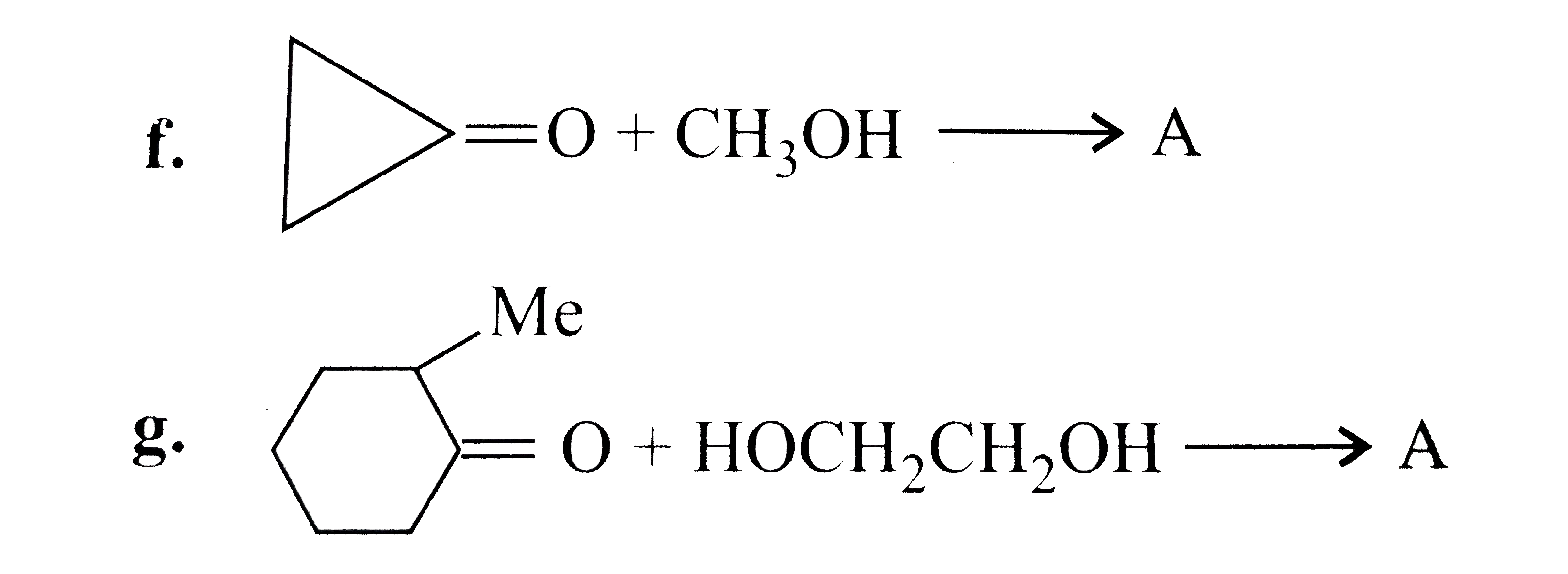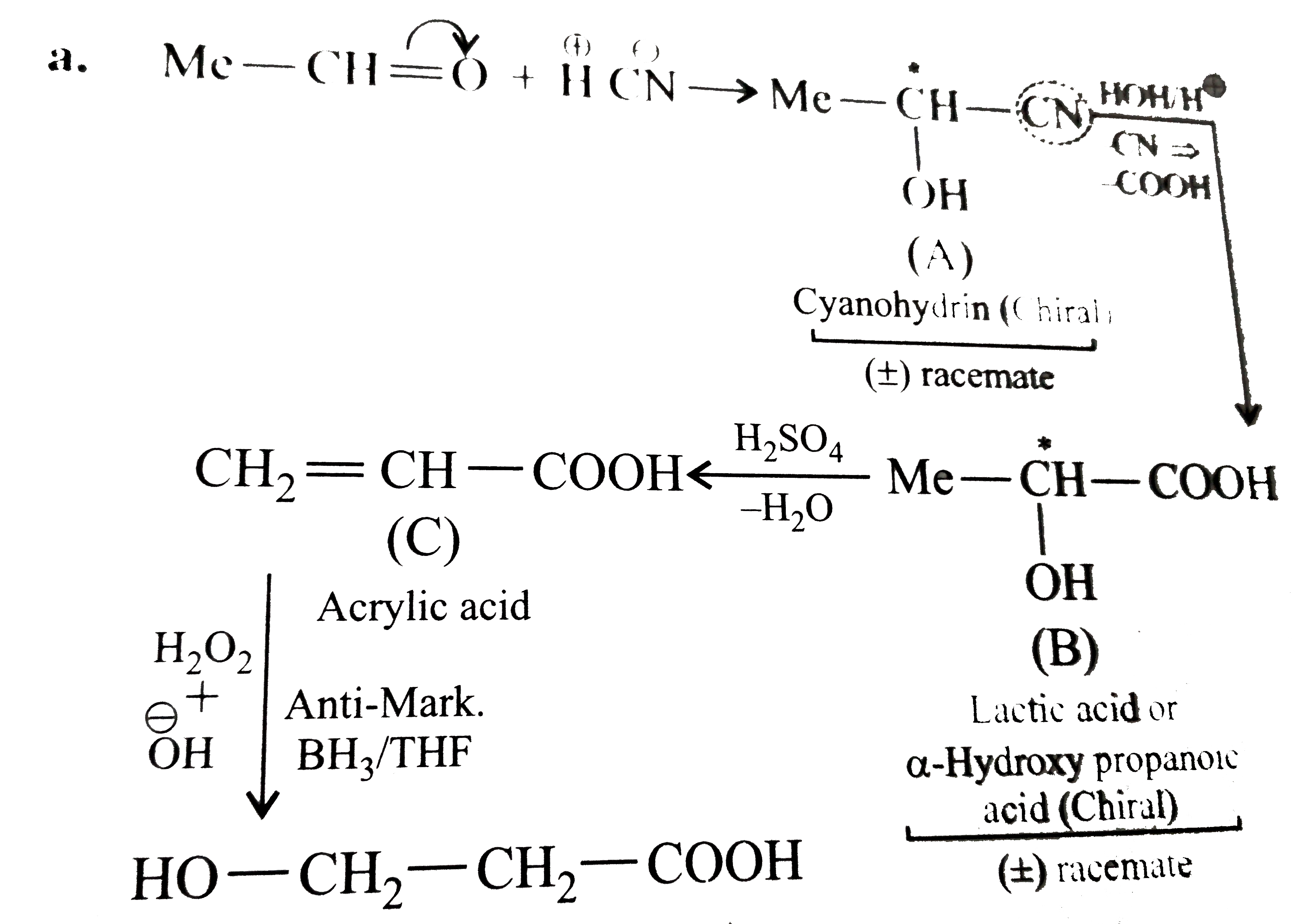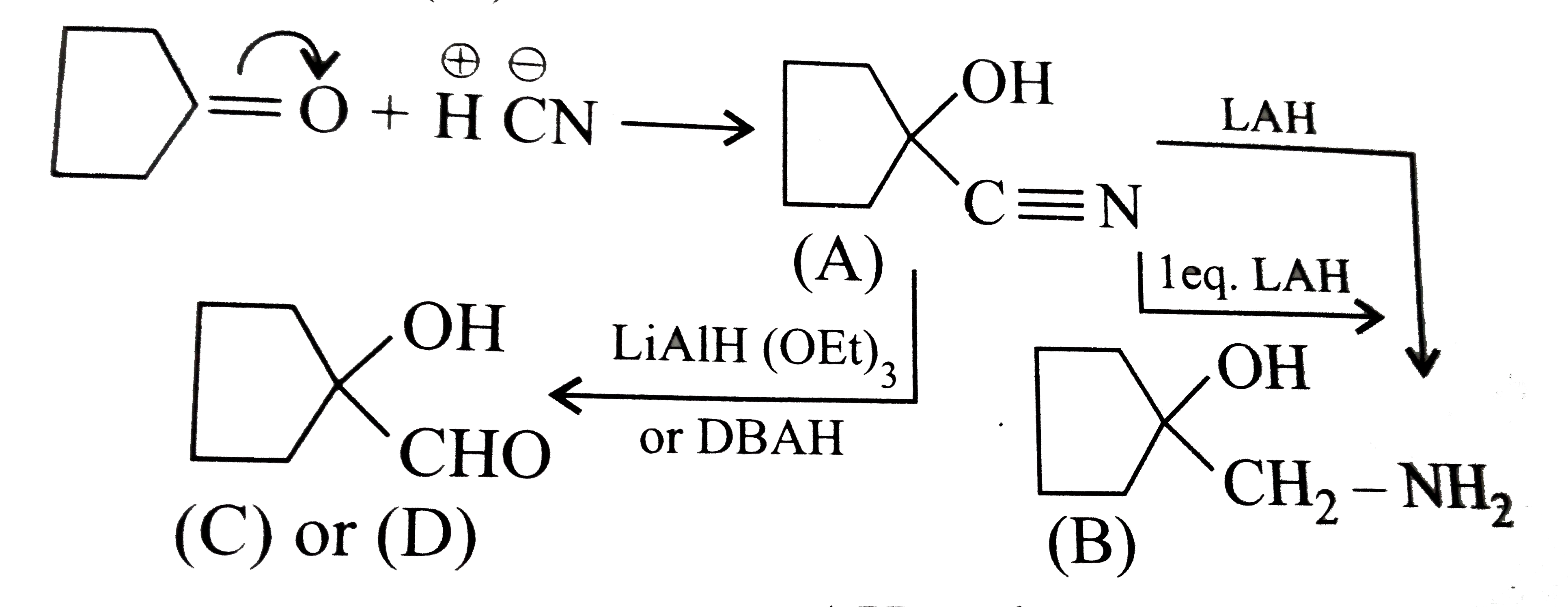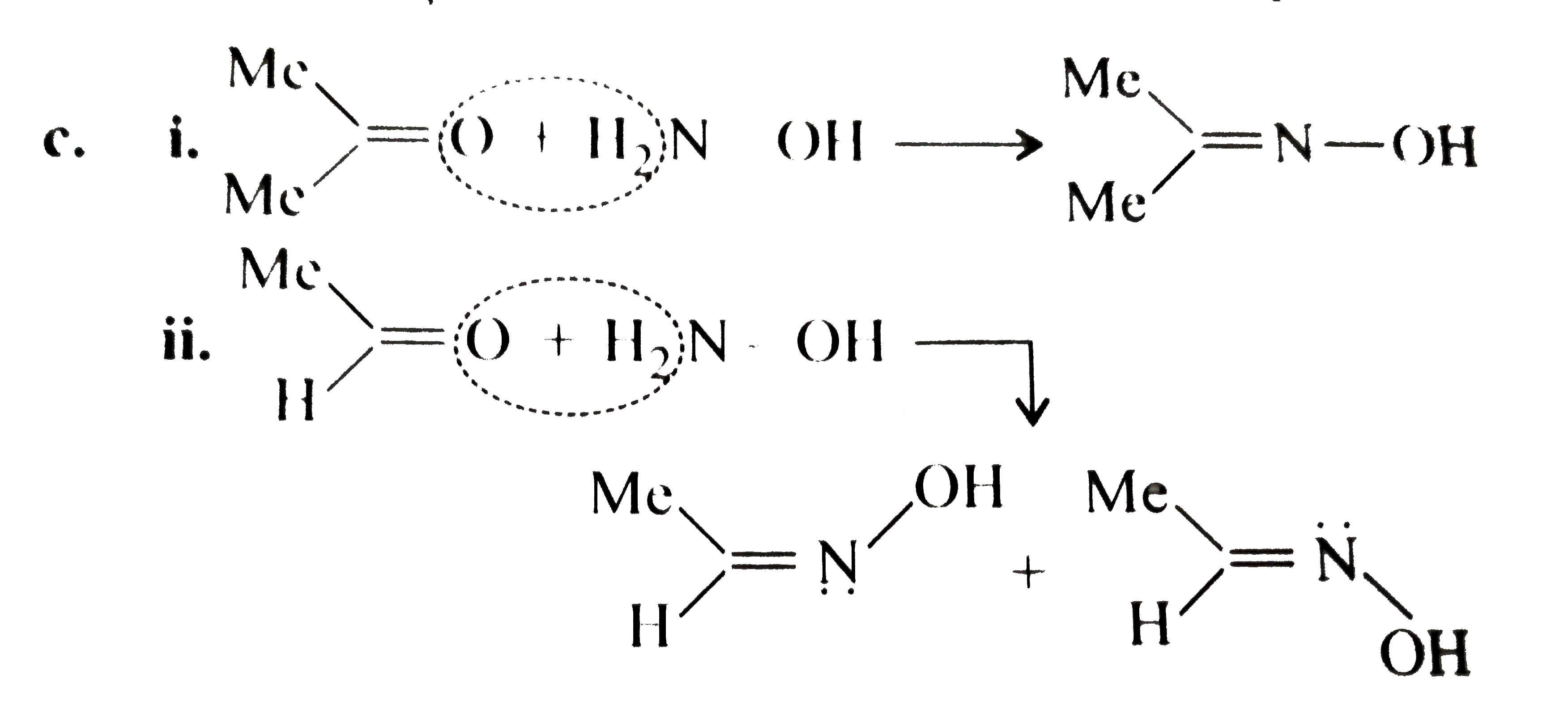a. 
b. 
c. Acetone on reaction with NH2OH gives one compound, whereas acetaldehyde gives two compounds that can be separated. Why?
d. Acetone on reaction with HCN gives one compound, whereas acetaldehyde gives two compounds that are difficult to separate. Why?
e. Butan−2-one gives sodium bisulphite addition product, whereas pentan−3-one does not. Why? (Test to differentiate Butan−2-one and pentan−3-one)
f. 
h. There are two (−NH2) groups in semicarbazide, of them which group reacts with (C=O) group and why?
Text Solution
a. 
b. 
With one equivalent of LAH at low temperature, the reaction can be used to avoid over-reduction and proceed only upto aldehyde stage. Deactivated reducing agents such as lithium triethoxyaluminium hydride or DBAH may also be used.
Mechanism:

c. i. 
ii. 
It gives geometrical isomers (disastereomers) which can be separated. Similar reactions are possible with other derivatives of ammonia, i.e., NH2NH2,PhNHNH2,2,4−DNP, semicarbazide (H2NNHCONH2), etc. Similarly, HCHO, PhCOPh (benzophenone),MeCH2COCH2Me (pentan−3−one), etc.,will give one compound, whereas MeCHO,PhCOMe (acetophenone),PhCHO, and MeCH2COMw (butan−2−one) will give two geometrical isomers.
d. i. 
ii. 
It gives enantiomers (optical isomers) due to the chiral centre. They arae difficult to separate since the chemical and physical properties of enantiomers are same. However, they can be separated by biochemical method using enzymes and making their diastereomers.
Similarly, HCHO,MeCOMe,PhCOPh (benzopehenone), MeCH2COCH2Me (pentan−3−one) will give only one compound, whereas MeCHO,PhCOMe (acetophenone), and MeCOCH2Me (butan−2−one) will give two optical isomers.
e. 3-Pentanone undergoes NA reaction with HCN, NH3, ROH, etc., but with NaHSO3, it does not react. This is due to the following:
i. Large-sized nucleophile (SO2−3).
ii. Due to steric hindrance by two bulky ethyl group.

f. No reaction, since ketone does not react with monohydric alcohol.
h. Semicarbazide (aNH2NHCObNH2) reacts with (C=O) with (aNH2) group, since (bNH2) group closer to (C=O) group is deactivated by resonance stabilisation. Hence, (bNH2) group no longer acts as nucleophile. So, (aNH2) group is more nucleophilic than the (bNH2) group.
|
Topper's Solved these Questions
- ALIPHATIC AND AROMATIC ALDEHYDES AND KETONESBOOK - CENGAGE CHEMISTRYCHAPTER - ALIPHATIC AND AROMATIC ALDEHYDES AND KETONESEXERCISE - Solved Examples
13 Videos
- ALIPHATIC AND AROMATIC ALDEHYDES AND KETONESBOOK - CENGAGE CHEMISTRYCHAPTER - ALIPHATIC AND AROMATIC ALDEHYDES AND KETONESEXERCISE - Exercises Subjective
52 Videos
- ALCOHOL,PHENOL AND ETHERSBOOK - CENGAGE CHEMISTRYCHAPTER - ALCOHOL,PHENOL AND ETHERSEXERCISE - Archives Analytical And Descriptive
15 Videos
- AMINESBOOK - CENGAGE CHEMISTRYCHAPTER - AMINESEXERCISE - QUESTION BANK
1 Videos
Similar Questions
Knowledge Check
What is the test to differentiate between pentan - 2- one and pentan - 3 -one ?
AIodoform testBBenedict's testCFehling's testDAldol condensationWhat is the test to differentiate between pentan - 2- one and pentan - 3 -one ?
AIodoform testBBenedict's testCFehling's testDAldol condensationWhich will not give pentan-3-one ?
A3,3-DichloropentaneB2,2-DichloropentaneCPentan-3-olDCa-propanoate
Give one chemical test to distinguish between acetaldehyde and acetone.
View SolutionWrite a test to differentiate between pentan-2-one and pentan-3-one.
View SolutionTo differentiate between pentan -2-one and pentan -3-one a test is carried out. Which of the following is the correct answer?
View SolutionReaction of acetaldehyde with HCN followed by hydrolysis gives a compound which shows :
View SolutionReaction of acetaldehyde with HCN followed by hydrolysis gives a compound which shows
View Solution
